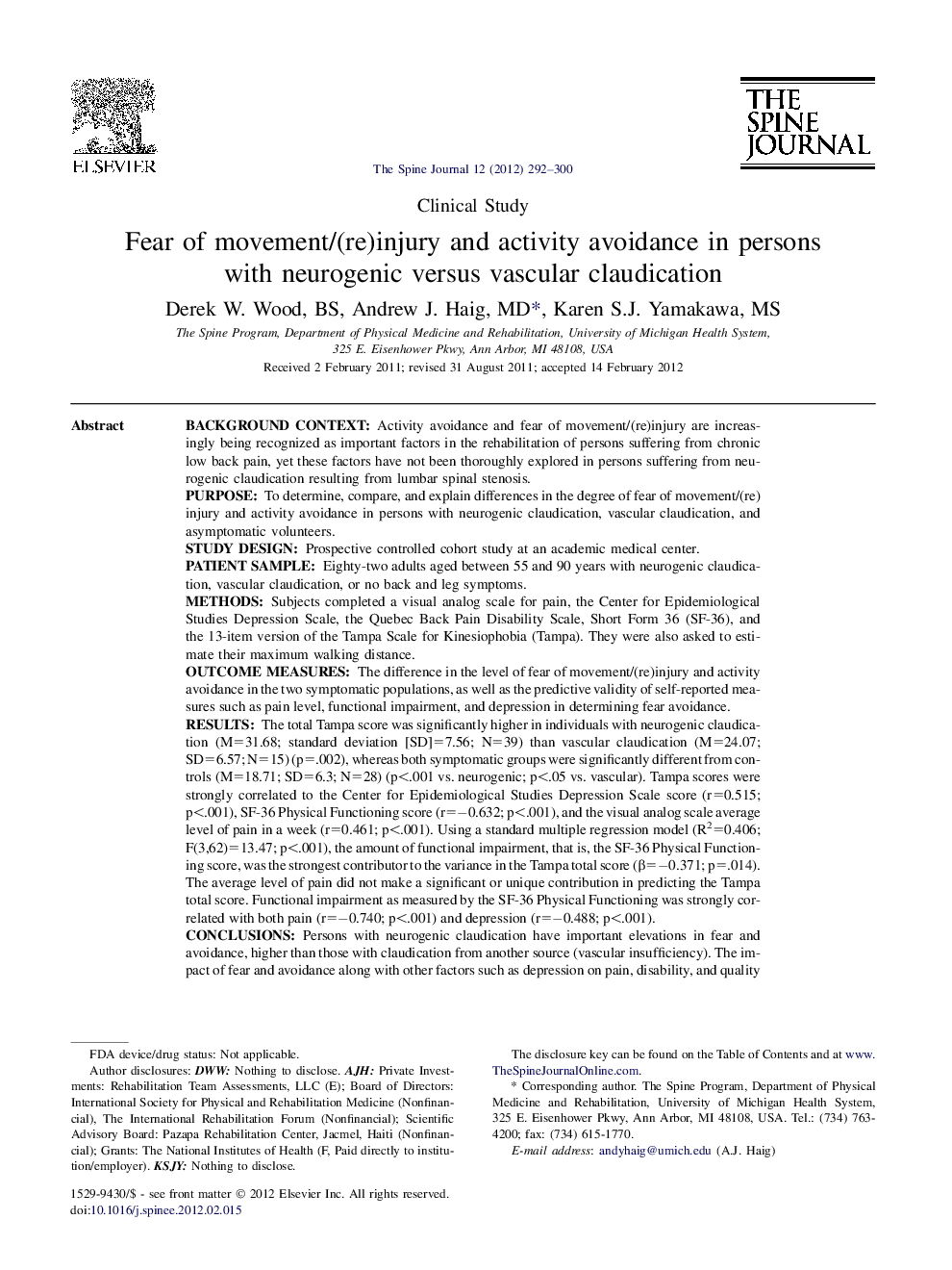| Article ID | Journal | Published Year | Pages | File Type |
|---|---|---|---|---|
| 4097693 | The Spine Journal | 2012 | 9 Pages |
Background contextActivity avoidance and fear of movement/(re)injury are increasingly being recognized as important factors in the rehabilitation of persons suffering from chronic low back pain, yet these factors have not been thoroughly explored in persons suffering from neurogenic claudication resulting from lumbar spinal stenosis.PurposeTo determine, compare, and explain differences in the degree of fear of movement/(re)injury and activity avoidance in persons with neurogenic claudication, vascular claudication, and asymptomatic volunteers.Study designProspective controlled cohort study at an academic medical center.Patient sampleEighty-two adults aged between 55 and 90 years with neurogenic claudication, vascular claudication, or no back and leg symptoms.MethodsSubjects completed a visual analog scale for pain, the Center for Epidemiological Studies Depression Scale, the Quebec Back Pain Disability Scale, Short Form 36 (SF-36), and the 13-item version of the Tampa Scale for Kinesiophobia (Tampa). They were also asked to estimate their maximum walking distance.Outcome measuresThe difference in the level of fear of movement/(re)injury and activity avoidance in the two symptomatic populations, as well as the predictive validity of self-reported measures such as pain level, functional impairment, and depression in determining fear avoidance.ResultsThe total Tampa score was significantly higher in individuals with neurogenic claudication (M=31.68; standard deviation [SD]=7.56; N=39) than vascular claudication (M=24.07; SD=6.57; N=15) (p=.002), whereas both symptomatic groups were significantly different from controls (M=18.71; SD=6.3; N=28) (p<.001 vs. neurogenic; p<.05 vs. vascular). Tampa scores were strongly correlated to the Center for Epidemiological Studies Depression Scale score (r=0.515; p<.001), SF-36 Physical Functioning score (r=−0.632; p<.001), and the visual analog scale average level of pain in a week (r=0.461; p<.001). Using a standard multiple regression model (R²=0.406; F(3,62)=13.47; p<.001), the amount of functional impairment, that is, the SF-36 Physical Functioning score, was the strongest contributor to the variance in the Tampa total score (β=−0.371; p=.014). The average level of pain did not make a significant or unique contribution in predicting the Tampa total score. Functional impairment as measured by the SF-36 Physical Functioning was strongly correlated with both pain (r=−0.740; p<.001) and depression (r=−0.488; p<.001).ConclusionsPersons with neurogenic claudication have important elevations in fear and avoidance, higher than those with claudication from another source (vascular insufficiency). The impact of fear and avoidance along with other factors such as depression on pain, disability, and quality of life for persons with claudication and spinal stenosis need to be explored.
